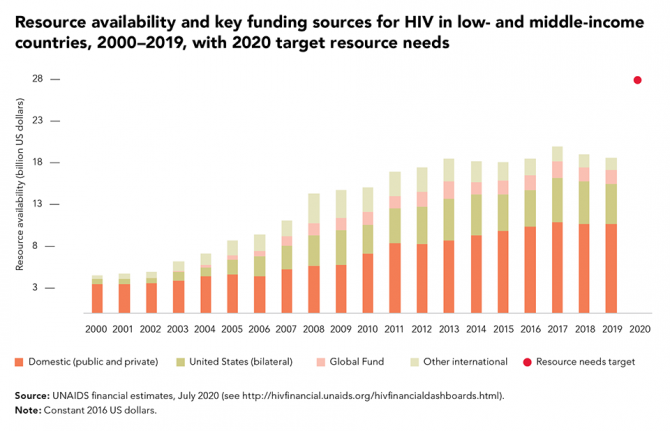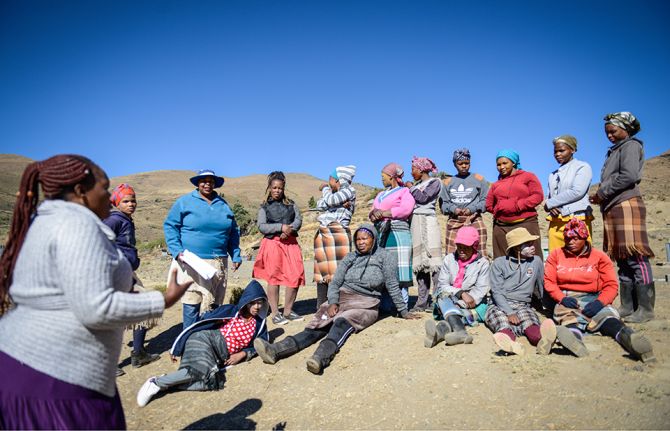

Update
HIV financing gap widening
16 November 2020
16 November 2020 16 November 2020The funding gap for HIV responses is widening. Momentum established following global agreement on the Millennium Development Goals in 2000 has been lost in the Sustainable Development Goal era. Increases in resources for HIV responses in low- and middle-income countries halted in 2017, with funding decreasing by 7% between 2017 and 2019 (to US$ 18.6 billion in constant 2016 United States dollars).
The total funding available in 2019 for HIV in these countries amounted to about 70% of the 2020 target set by the United Nations General Assembly.
In the light of the theme of this year’s World AIDS Day, global solidarity, shared responsibility, it’s interesting to note that domestic investments in HIV responses in low- and middle-income countries have grown by 50% since 2010. Financial support for those countries provided through the Global Fund to Fight AIDS, Tuberculosis and Malaria increased by 26% between 2010 and 2017, but then declined by 15% over the next two years, leaving a 7% total increase over the nine-year period. Bilateral funding provided to those countries by the United States Government increased by 50% between 2010 and 2017 before declining by 8% over the next two years, leaving a 38% total increase since 2010 (in constant 2016 United States dollars). Contributions from other international sources declined by 50% between 2010 and 2019. Resource availability is presented in constant 2016 United States dollars in order to be comparable with the target for 2020 adopted in the 2016 High-Level Meeting on Ending AIDS.



